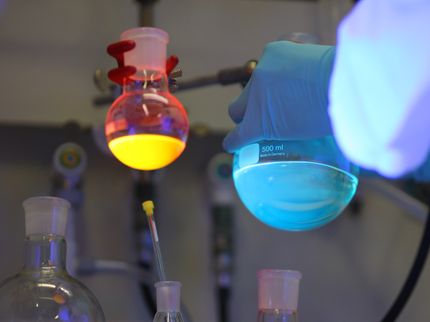Creating complex molecules in just a few steps
Advertisement
Researchers have found a way to convert single bonds between carbon and hydrogen atoms in a chemical molecule into carbon-carbon bonds. This so-called C-H activation is considered a promising strategy for producing complex molecules from simple starting materials in just a few steps. The main problem so far had been the specific conversion of individual bonds. The researchers have now succeeded in this. By choosing a suitable solvent, they ensured a high yield of the desired product. The team of the Ruhr-Universität Bochum around Prof Dr Lukas Gooßen and Stefania Trita describe the process together with a colleague of the University of Kaiserslautern.
“Existing industrial processes for the synthesis of complex molecules often have the disadvantage that they require many steps and that a lot of waste is generated, especially salts,” says Lukas Gooßen, Evonik Chair of Organic Chemistry I and member of the Cluster of Excellence Resolv. One solution may be C-H activation.
Was considered impossible
Bonds between carbon (C) and hydrogen (H) are the most common chemical bonds, both in nature and in artificial chemicals. They are very stable and are reluctant to undergo chemical reactions. “For that reason, it had long been considered impossible to transform these bonds into functional groups that are essential, for example, for drug efficacy,” Gooßen explains.
The biggest challenge is to transform one particular C-H bond in one molecule whilst leaving the others untouched. In the current study the scientists worked with benzoic acids, which consist of a carbon ring and an acid group. With the new method they specifically converted a single C-H bond on the carbon ring into a C-C bond. This enabled them to easily combine two different molecules to form a more complex product.
Low temperature, less waste
“One advantage is that we need a low reaction temperature of only 50 degrees Celsius and that no waste products are created,” Gooßen summarises. “We hope that one day the process will enable complex pharmaceutical chemicals and substances required in agriculture to be produced in fewer steps than before and in a more energy-efficient, environmentally friendly and cost-effective manner.”
The choice of solvent was crucial for an efficient reaction. “With commercially available solvents, we initially achieved a very low yield of the desired product,” says Lukas Gooßen. With trichloroethanol, the yield was significantly increased.
Original publication
Other news from the department science
Most read news
More news from our other portals
See the theme worlds for related content
Topic world Synthesis
Chemical synthesis is at the heart of modern chemistry and enables the targeted production of molecules with specific properties. By combining starting materials in defined reaction conditions, chemists can create a wide range of compounds, from simple molecules to complex active ingredients.

Topic world Synthesis
Chemical synthesis is at the heart of modern chemistry and enables the targeted production of molecules with specific properties. By combining starting materials in defined reaction conditions, chemists can create a wide range of compounds, from simple molecules to complex active ingredients.





























































